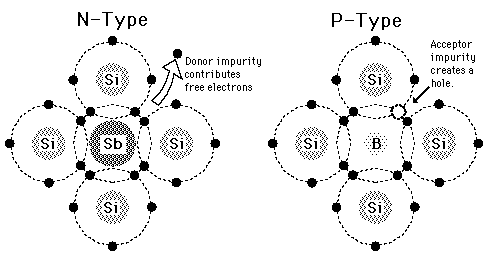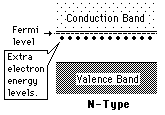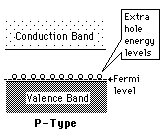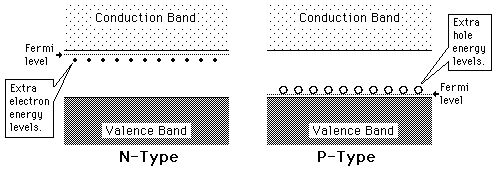The Doping of Semiconductors
The addition of a small percentage of foreign atoms in the regular crystal lattice of silicon or germanium produces dramatic changes in their electrical properties, producing n-type and p-type semiconductors.
(5 valence electrons) produce n-type semiconductors by contributing extra electrons. (3 valence electrons) produce p-type semiconductors by producing a "hole" or electron deficiency. | 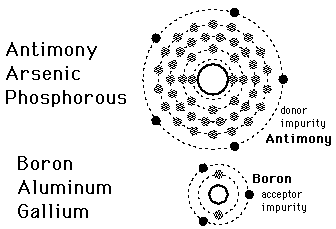 |
Semiconductor concepts
| HyperPhysics***** Condensed Matter | R Nave |
